Severe cold snap defies El Niño, brings extreme chill, snow to the Prairies
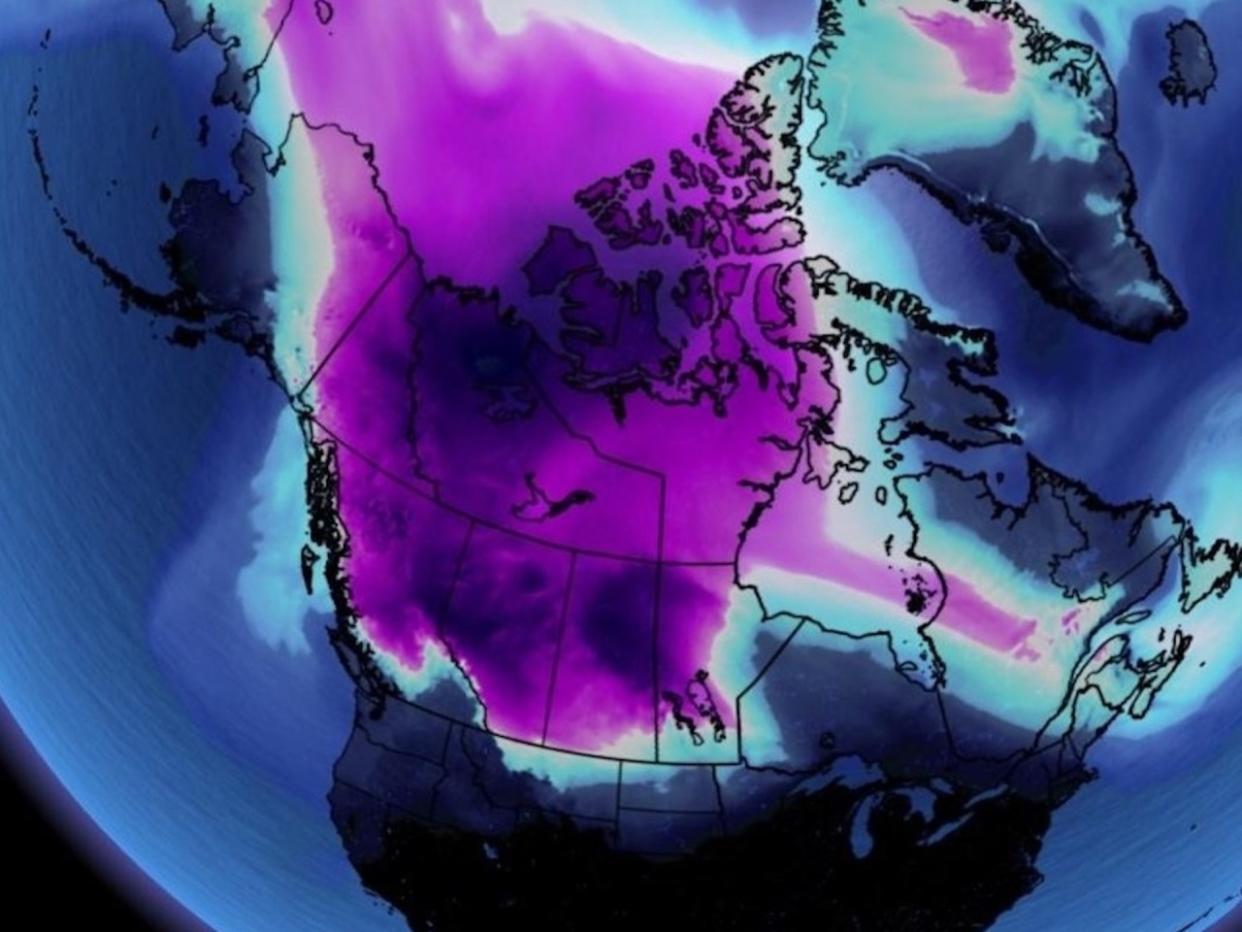
Get ready for a drastic pattern change on the Prairies!
A blast of wintry weather is ahead, bringing with it some of the coldest air of the season. So, it's time to bundle up and prepare for the chill.
Snowfall Tuesday into Wednesday
First, let's talk about the snow. It's going to start making its way into parts of Alberta early Tuesday morning, gradually moving east throughout the day. By late morning or early afternoon, southern areas of Saskatchewan should also expect to see some snow. If you live in Edmonton or Saskatoon, be sure to give yourself some extra time for the evening commute, as we might experience some snow buildup in the mid-afternoon to evening hours.
As we move into Wednesday, the snow will reach Manitoba during the early hours of the morning and continue throughout the day in certain areas of the province.
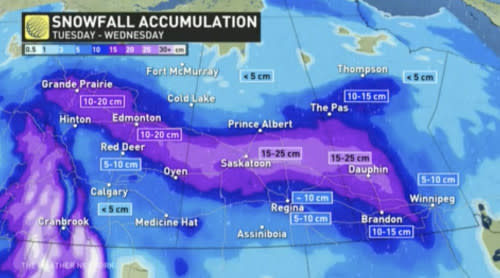
Now, here's a heads up for everyone in these three provinces. Once the system clears out on Thursday morning, temperatures are going to drop dramatically, reaching dangerously cold levels through the weekend. It's important to exercise caution and take necessary precautions to stay safe.
Extreme Cold
To think, later this week, daytime highs on the Prairies will struggle to go above -30°C –– an extremely rare feat during an El Niño winter.
Things are going to change in a hurry across the Prairies as a flip in the pattern opens the gates for frigid air to spill out of the heart of the Arctic Circle.
MUST SEE: What is the polar vortex? How it’s responsible for dangerous cold
After Edmonton, Alta., finally reached a temperature of -15°C in the early hours of Jan. 7, the latest on record, that will soon be very warm by comparison to what's coming.
Temperatures plummeting well into the -20s are what's on the menu for the region this week.
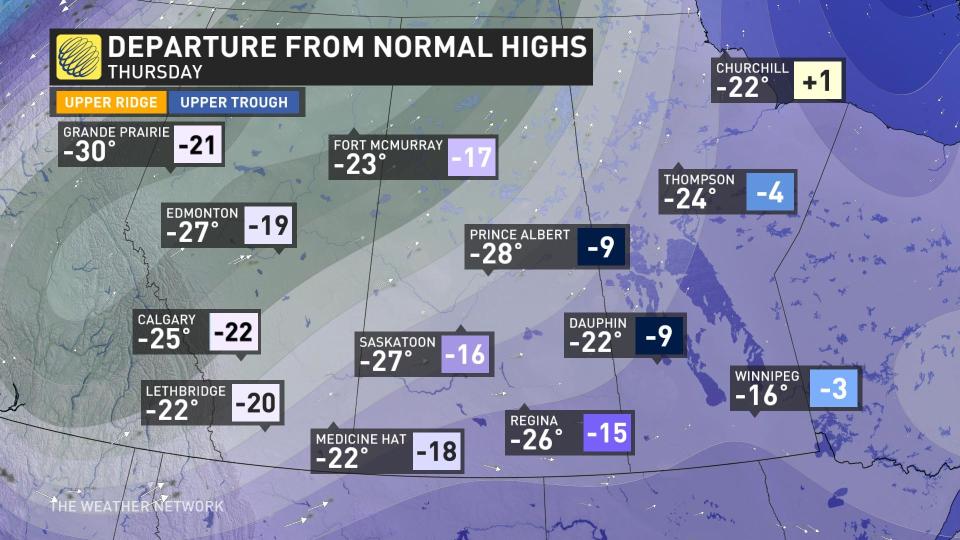
The polar vortex will drive this rapid change in wintry fortunes across the western half of Canada. This large-scale circulation high above the Arctic acts like a fence, keeping the bitterest chill confined to the higher latitudes. When the polar vortex weakens and grows unstable, those frigid temperatures can spill south.
After the mild December where the coldest air in the Northern Hemisphere stalled over Siberia, the tables have turned. Now, the coldest temperatures relative to normal on the entire globe will be across British Columbia and the western Prairies.
DON'T MISS: Winter to finally show up in January as El Niño bested by polar vortex
A big temperature contrast is forecast on Tuesday as a low-pressure system tracks east. There will be a 30-degree temperature range across Alberta, as cold air begins to ooze farther south.
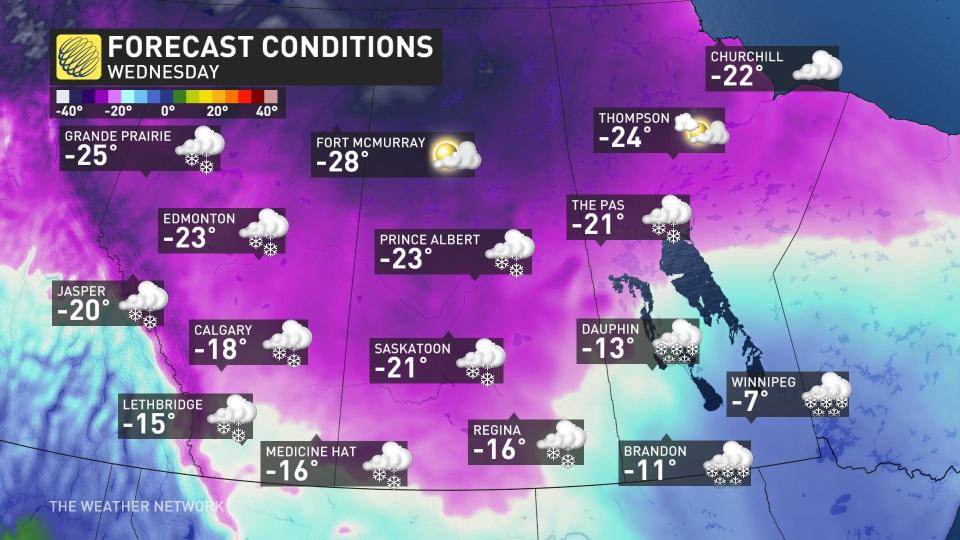
By Wednesday, the Arctic floodgates will have opened across the western Prairies, with temperatures diving well below seasonal.
Temperatures continue to tumble to dangerously cold values on Thursday, here’s the temperature anomalies forecast to be more than 20 degrees below seasonal in Alberta.
MUST SEE: The chilling truth behind wind chill and its impact on our well-being
But it gets worse, somehow. It gets even colder on Friday as models are suggesting highs will struggle to get much above -30°C for daytime highs, a rarity in the 21st century. Edmonton airport has recorded just five days in the 21st century below -30°C as daytime highs –– the last time on Dec. 21, 2022.
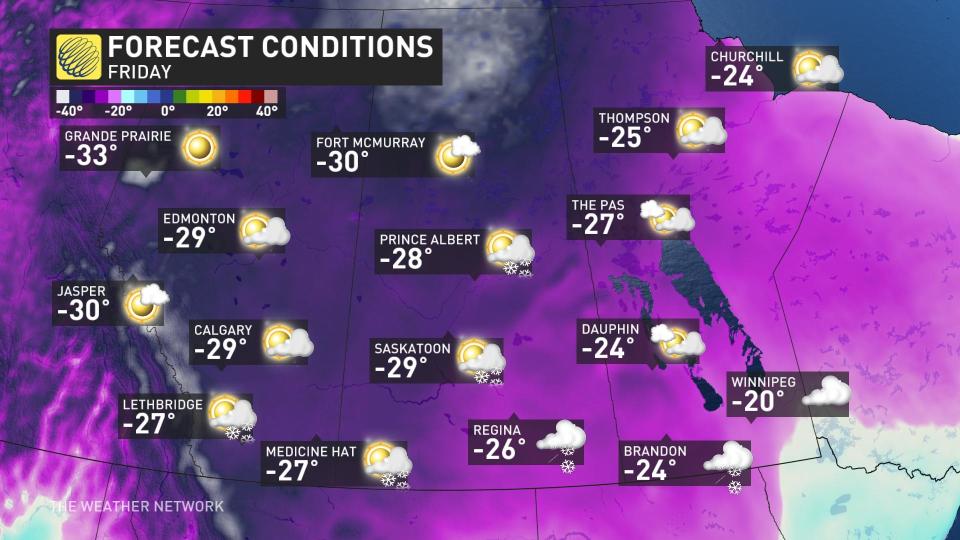
For Calgary, it’s even more rare. Just once since the year 2000 has it had a daytime high of -30°C, recorded on Jan. 27, 2004. The 20th century had 56 instances of a daytime high at or below -30°C, for reference.
Stay with The Weather Network for the latest on conditions across the Prairies.


